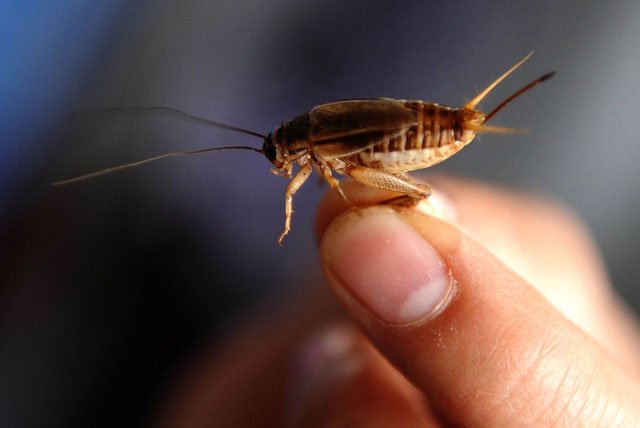
The thought of insect based foods may not be normally associated with cuisines but some experts claim that bugs are the food of the future. They’re cheap, sustainable, and packed with proteins. And it’s also possible to farm them in rooftops or empty lots.
New York based Terreform Open Network Ecology (ONE), urban design and architecture organisation, is set to change the mindsets of Western diners with the new Cricket Shelter Farm.
The prototype’s interior looks more alien than human with a new hybrid approach to architecture. “It’s designed to both protect and feed humans in emergencies,” says Terreform ONE co-founder Mitchell Joachim.
Eating insects could help fight obesity, UN says
The free-range Cricket Shelter Farm is a combination of an emergency shelter and a vertical farm but it’s also a clever, sanitary way to bring insect-based protein to fine cuisine. “It shifts between two worlds,” says Joachim.
Terreform ONE was commissioned by Art Works for Change to build a survival shelter. The bright white prototype solution is a stark contrast of its present home at the Brooklyn Navy Yard in New York City.
The structure consists of a CNC plywood frame and 264 plastic rectangular insect pods stacked on top of each other. Should a natural disaster strike, the shell would provide both protection as well as a sustainable farming system which could produce high-protein nutrition in affected areas.
"We thought, if we were going to do it, it's best to combine it with a system for subsistence farming. In a tsunami or a massive fire, everything is devastated, you don't have access to cows or chickens, so people will need access to good sources of alternative protein," says Joachim.
 PHOTO: AFP
PHOTO: AFPThe potential benefits of introducing insects into Western diets have sparked interest in insect farming. Terreform ONE decided to take their design one step ahead and researched cricket behaviour.
First of its kind: Insect museum to be set up at Faisalabad varsity
Joachim and the team observed that crickets “don’t like density” and become fussy in crowded situations. If kept in confined spaces or food runs low, they eat their young. “They are all cannibalised,” he says.
This finding has led the researchers to add special ventilation tubes to the pod. The tubes are thin, nylon strands that connect the units to each other and enable the crickets to move freely, in any direction.
Joachim says the mobility encourages reproduction and connectivity of units avoids any overcrowding. Moreover, the structure’s “giant quills” naturally ventilate the insects’ living space by varying air pressures.
The architects decided to make their design more ‘fabulous’ by giving them shape. “By doing that, we ended up creating cricket horns. The vibrating sounds of air that are cooling the colonies are magnified. The chirping sounds of the crickets also get amplified."
As a farm, the pods are able to produce 22,000 insects every six to 12 weeks on any roof or backyard. The plastic gates provide food for the crickets and keep out waste, ensuring an easy harvest of the crickets.
According to Joachim, traditional methods of farming crickets are cheaper but not necessarily hygienic. "Once you reach adult size, you don't get out of there. You shake out the pod and just get the crickets themselves - no feces," he explains.
The most exciting factor for Joachim is the fact that crickets hold a clean, environmentally-friendly and high protein ingredient to regular diets.
 PHOTO: AFP
PHOTO: AFPAround 2 billion people eat insects as part of their everyday diet. Joachim notes that gram for gram of protein, farming crickets uses four hundred times less water and produces 200% less carbon than traditional livestock farming.
Rags to riches: Tunnel farming: the swift money maker
While crickets may not seem like the most enticing foodstuff on Western plates, Joachim is working with chefs and food companies in Brooklyn to add flavour to the insect’s potential in restaurant plates.
"Previously people wouldn't eat sushi, no one would eat raw fish at all. But suddenly, when it was presented as fine cuisine, Americans and Europeans started eating it overnight," he says.
The organisation has also produced a protein bar and insect-infused drinks.
The article originally appeared on CNN.






















1713281138-0/US-Treasury-Secretary-Janet-Yellen-(2)1713281138-0-270x192.webp)






















COMMENTS
Comments are moderated and generally will be posted if they are on-topic and not abusive.
For more information, please see our Comments FAQ